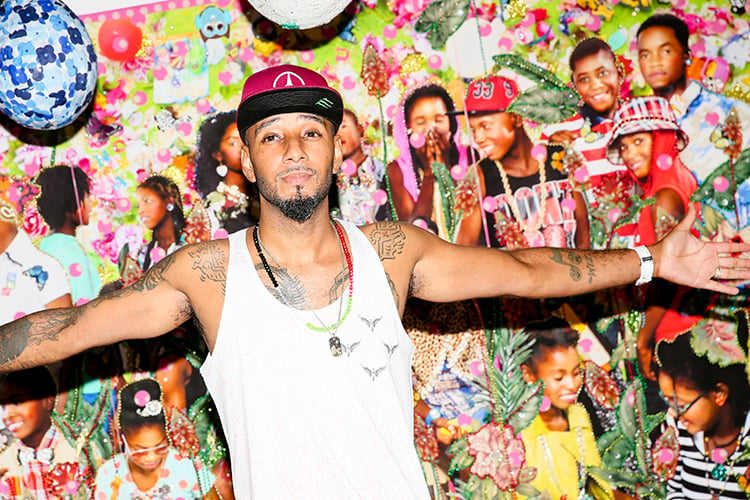
If there was one thing made abundantly clear at No Commission NY: Art Performs, the Bronx pop-up art fair from Bacardi and the Dean Collection, it is that hip hop star Swizz Beatz is doing everything he can to be a great patron of the arts.
“Two years ago, Swizz found me on Instagram,” So Youn Lee, an independent California-based artist from South Korea who is not currently represented by a gallery, told artnet News at a press preview for the fair, which ran from August 11–14. “As an emerging artist, it’s really hard to find the right platform,” she said, adding that Swizz is “like a big brother to me.”
A passionate collector, Swizz told artnet News that before dedicating himself to supporting living artists, he started off collecting the big-name, blue-chip artists one would expect to see in any major museum collection, such as Marc Chagall, Andy Warhol, and Jean-Michel Basquiat.
See the four reasons Swizz is passionate about the fair below.
1. Freedom for artists.
“When you free the artists, you free the world. A lot of artists are not free. That’s not only in art, that’s in music, that’s in fashion. We’re locking away so much great talent because of politics and business. And so I wanted to lead the way and take some of that stress off, even if it’s only a couple of times a year.”
2. The Bronx.
“This is where I’m from and these are the streets that I survived. A lot of people always say: people can’t go back to where they came from or people don’t do things where they came from. That’s not true of me. I’ve been doing a lot of different things in the Bronx, but with artists from around the world, including Bronx artists, so people can have a diverse thought when it comes to creativity and arts.”
3. Putting artists and collectors face to face.
“Artists never get to really meet their collectors. A lot of people that represent the artists always come up with stories for the artists to sell their work. And so my view is like, I know every artist is not a drug addict, every artist is not crazy, or not capable of doing good business, and a lot of the representation of the artists is like, they can’t stand up on their own.
And I like this show because I can’t tell the artists what to put in the show. They’re in charge of their installations, they’re in charge of the works that they put, they’re in charge of their price points.”
4. Discovering new talent.
“This is an opportunity to see so many great artists. Doing it in the Bronx, a lot of these people, even in the Tri-State area, they might not have the money to get to go see this at Basel, or see it when we do it in London or Shanghai or other places.
Part of the discovery is that you have known artists hanging next to unknown artists. So you might come here to see a Kehinde Wiley and discover So Youn Lee. It’s like—Wow, I’ve never seen this person before! This person is still an unknown artist, they’re not in the museums, you know… All the artists in the show collectively bring on that idea that because we’re all an art community, then we should move as one, and celebrate as one.”